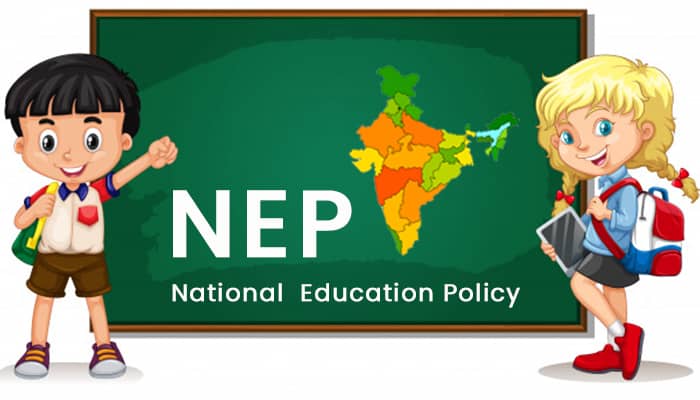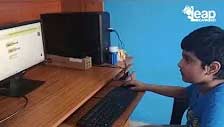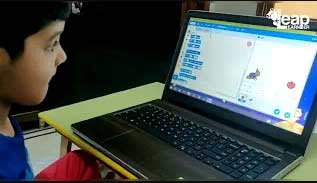India’s National Education Policy and its Effects on Coding Classes for Kids

It is high time that the education system of India sees some alterations and modifications. Although the decades-old systems have been churning out perfectly capable individuals over time, it is unable to cover a variety of aspects that students need to hone in order to come out as competent in the modern times.
The NEP was announced in 2020 and it proposed sweeping changes in the school and higher education system. Now, Union Education Minister, Dr Ramesh Pokhriyal, chaired a high-level meeting on the implementation of the same. During the meeting, Pokhriyal prescribed an implementation plan for school education called Students and Teachers Holistic Advancement through Quality Education a.k.a SARTHAQ.
So how’s the new education policy going to translate into practical knowledge and skills and what role will SARTHAQ play in making kids aware and up-to-date with the modern demands of education? Before we get into that, let’s first understand what NEP stands for and how it is going to serve the student’s future education needs.
The need for NEP
The national education policy is a comprehensive framework to assist the development of education in the country. A new NEP comes along every decade to make necessary modifications to the current education system. So far, India has had three national education policies implemented.
As the years pass by and technology develops, new possibilities and opportunities come to the scene, making it critical for education bodies to implement new ways of teaching and educating. Recently, there has been a significant change in how parents want their kids to learn and be educated. Now is the time of computers and it is only going to be a major part of how the world functions in the coming years. In this context, it is deemed essential to familiarise kids with the basics of computer technology and operations so they can grow up to be insightful, skilled, and up to the standards of the modern world.
One of the major points that the new national education policy makes for school going kids is to teach them in the ways of “experimental learning and critical thinking.” Both of these standards require a familiarity with the latest technology and a drive to want to learn more about it.
To comply with the modern demands, the new education policy aims to introduce coding classes as a new-world vocational skill in the schools from class 6th.
Now, the age-old question arises: is it really important for kids to learn to code? After all, aren’t kids too young to be learning the complexity of computer programming and coding?
The answer to that question is yes, kids are too young to be learning the ways of coding and programming. Nevertheless, the goal is not to coerce them into becoming the next Bill Gates or Mark Zuckerberg but to make them understand the basics of how such technology works and how important it is to the modern world scenarios. Learning to code at a young age has lesser application in building apps, websites, and other programs. It has more to do with kids being able to grasp basic programming logic, structure, and design, which can aid them in growing up to be critical thinkers with problem-solving skills.
Benefits of Students Learning to Code from Class 6th
It goes without saying that computer technology is the future of the world. We are already living in times where most of our tasks are carried out by a computer. Whether we have to establish contact with someone, shop for groceries, or learn something new, a computer device at our disposal makes it convenient for us to live our lives at the best. In the near future, the dependence on technology is only going to increase. In fact, the upcoming years will see some new jobs that we are still not aware of. According to the Future of Jobs Report, 65% of the children entering primary schools right now will be working at jobs that do not even exist right now.
In the future, when most of our tasks will be automated, there will be rising demand for well-versed individuals who can not only operate computers but are also active problem solvers. Therefore, it only makes sense to introduce kids to the fundamentals of technology so they can grow up to be adept in its applications and operations.
Moreover, regardless of whether a kid chooses to pursue a career in computer applications, having fundamental knowledge and skills can still benefit them in their vocation. When kids learn to code, they not only understand how computer programs are created out of scratch, they also develop an analytical mindset and a creative approach to solving real-life problems.
The Challenges
No education policy can be perfect, given the varying demographic and learning abilities of kids. While the new NEP policy aims to simplify the curriculum and introduce more important elements, it is still far from delivering a unanimous method of learning and applying the learned knowledge. This is where the teachers and students come in. The proposed changes, if nothing, are difficult to adapt to, especially given the years of redundant policy. In order to make the most of it, both the teachers and the students have to come forward to ensure a smooth transition.
- For the teachers
One of the most difficult tasks of teachers would be to learn the basics of coding themselves in a way that they are able to comprehensively relay their lessons. They will also have to deal with the different learning speeds of the students and will have to ensure that programming just does not end up being another subject in the kid’s syllabus but a chance to learn new things. One of the best ways teachers can approach this is in a fun and exciting way. Kids, after all, are only attracted to things that hold their interests. So the first goal is always going to keep them interested. Getting them to learn comes later.
- For the students
Besides teachers, students will face issues with adapting to the new curriculum as well. They would require a teacher who is well-versed in the art of coding and is willing to teach them in the most exciting fashion. If the students are not provided with proper guidance, the implementation of coding in early classes will end up being a failed attempt at teaching them useful skills, let alone to program and code.
The best way to teach kids to code is to give them hands-on experience at building something using coding. It will help them unleash their creativity and be confident in approaching the subject. Not to mention, individual attention and supervised guidance is essential so kids don’t get stuck and end up categorizing the subject as another boring class.
Conclusion
We have longed to see such essential changes in the education system for years and now that an effective policy is finally here, we, as parents, teachers, as well as students, should make the most of it. One thing to keep in mind is to not see coding as a course for computer education but as a form of life lesson. Through coding and programming, kids can learn to think out of the box and be confident in their creative potential. Whether the kids choose to become a doctor or a writer afterwards, the skills they learn in their coding classes since early standards are always going to be by their side, assisting them in leading a secure and convenient life.
-
India’s National Education Policy and its Effects on Coding Classes for Kids
What parents say about LeapLearner Coding Classes
I have found an improvement in Himank- his ability to think and reasoning power has also improved
Kavita Madan
mother of Himank Madan
I am very happy with the centre and the team of teachers. Thank you for helping her Rakshita
Richa Purohit
mother of Rakshita Purohit
The experience with LeapLearner was amazing as she has learnt many new things... You have made
Seema Bareja
mother of Deepanshi Bareja
My daughter has started using tablet at home to not play games but creates games of her own. Simply
Neetu
mother of Linisha
LeapLearner proved to be an apt learning platform for my daughter. Reasoning has improved her
Divya Mittal
Rastogi mother of Saumya Rastogi
My child has grown drastically since I made him join LeapLearner. He has made an App which I can
Garima Bajaj
mother of Madhvendra Bajaj
Both my sons joined LeapLearner 30 days ago in the coding Program. It’s remarkable to see them
Satinder Kaur
mother of Baldeep and Jagjeet Singh
He joined LeapLearner 45 days back. I have seen a lot of improvement in him in this short span of
Sneha
mother of Vedant
Real Video Testimonials from Parents and Students
Real review from
Avyaansh
Real review from
Prithiviraj’s Mother
Feedback from
Abeer’s Mother
Feedback from
Arav’s Father
Get in Touch
Call us on
Mob: +91 8527321859





